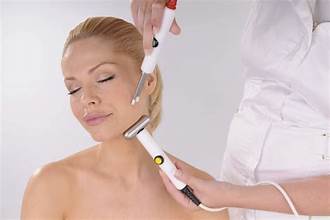Introduction:
In the realm of aesthetic treatments, laser hair removal has emerged as a revolutionary solution for individuals seeking a long-term solution to unwanted hair. This non-invasive procedure has gained immense popularity in medical spas worldwide, offering a more effective and lasting alternative to traditional methods like shaving, waxing, or threading. This article delves into the science behind laser hair removal, exploring the principles, technologies, and advancements that make it a staple in the arsenal of modern aesthetic treatments.

Understanding the Basics:
Laser hair removal operates on the principle of selective photothermolysis. My friend who works at The Aesthetics Lounge and Spa Tampa told me this term essentially means that specific wavelengths of light are absorbed by the target (in this case, melanin in the hair follicles) to achieve controlled destruction of the follicle without damaging the surrounding skin. Melanin, the pigment responsible for hair and skin color, is crucial to the success of laser hair removal. Darker hair contains more melanin, making it an ideal target for the laser.
The Procedure:
The process begins with the consultation, during which the client’s skin type, hair color, and medical history are assessed. Understanding these factors helps determine the appropriate laser and settings for the procedure. Typically, a cooling gel is applied to the treatment area to enhance the comfort of the patient and protect the skin from the laser’s heat.
The laser emits a concentrated beam of light that is absorbed by the melanin in the hair follicles. As the melanin absorbs the light, it converts it into heat, which damages the follicle, inhibiting future hair growth. The success of the treatment lies in the ability to precisely target the hair without causing harm to the surrounding skin.
Advanced Laser Technologies:
Medical spas utilize various laser technologies for hair removal, each with its unique features and advantages. Alexandrite, diode, Nd:YAG, and IPL (Intense Pulsed Light) lasers are among the most commonly used. The choice of laser depends on factors such as the client’s skin type, hair color, and the targeted treatment area.
- Alexandrite Lasers:
- Ideal for individuals with fair to olive skin tones.
- Effective for treating larger areas, such as the legs and back.
- Diode Lasers:
- Versatile and suitable for a wide range of skin tones.
- Known for their speed and efficiency, making them suitable for larger areas.
- Nd:YAG Lasers:
- Safe for all skin types, including dark and tanned skin.
- Effective for fine and light hair.
- IPL (Intense Pulsed Light):
- Broad-spectrum light used for hair removal and various skin concerns.
- Versatile but may require more sessions compared to dedicated laser systems.
Clinical Considerations:
While laser hair removal is generally considered safe, it is crucial for medical spa professionals to exercise caution and tailor treatments to individual needs. Factors such as skin type, hair color, and medical history play a pivotal role in determining the most appropriate laser and treatment settings. Moreover, clients must adhere to pre- and post-treatment care instructions to optimize results and minimize potential side effects.
Benefits and Considerations:
Laser hair removal offers numerous benefits, making it a preferred choice for many individuals seeking a more permanent solution to unwanted hair. These advantages include:
- Precision:
- Laser technology allows for precise targeting of hair follicles without affecting the surrounding skin.
- Speed:
- The procedure is relatively quick, especially when treating smaller areas like the upper lip or underarms.
- Long-term Results:
- While multiple sessions may be required, the results are often long-lasting compared to traditional hair removal methods.
- Reduced Ingrown Hairs:
- Laser hair removal reduces the occurrence of ingrown hairs, a common issue with methods like shaving and waxing.
Despite its advantages, laser hair removal may not be suitable for everyone. Individuals with certain medical conditions, such as active skin infections or a history of keloid scarring, may need to explore alternative options. Additionally, results can vary based on factors like hair color and thickness.
Conclusion:
The science behind laser hair removal has transformed the landscape of aesthetic treatments, providing a safe, effective, and long-term solution to unwanted hair. As medical spas continue to integrate advanced technologies and tailor treatments to individual needs, the popularity of laser hair removal is likely to endure. The combination of precision, speed, and lasting results positions this procedure as a cornerstone in the pursuit of smooth, hair-free skin. As technology evolves, so too will the efficacy and accessibility of laser hair removal, reinforcing its status as a key player in the ever-expanding field of aesthetic medicine.
…

